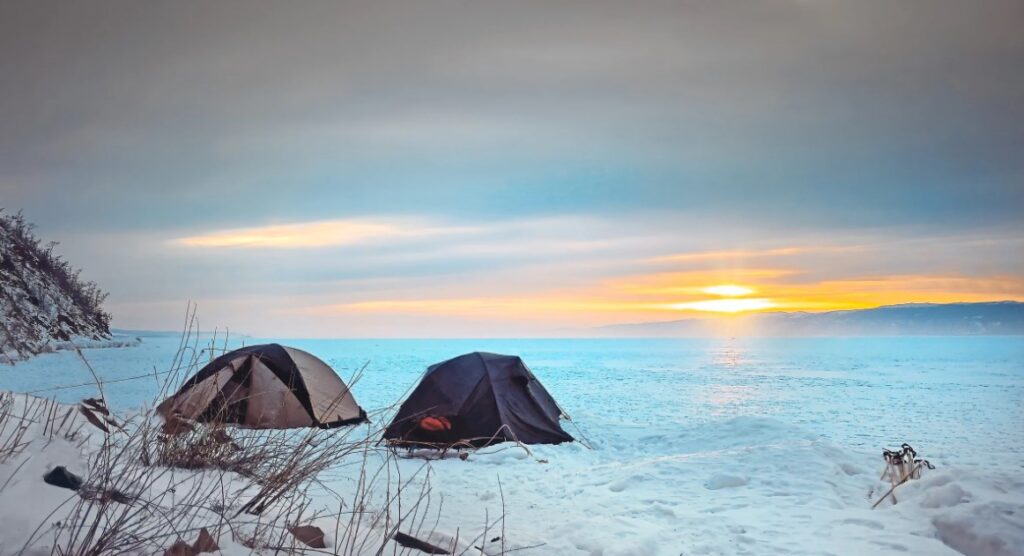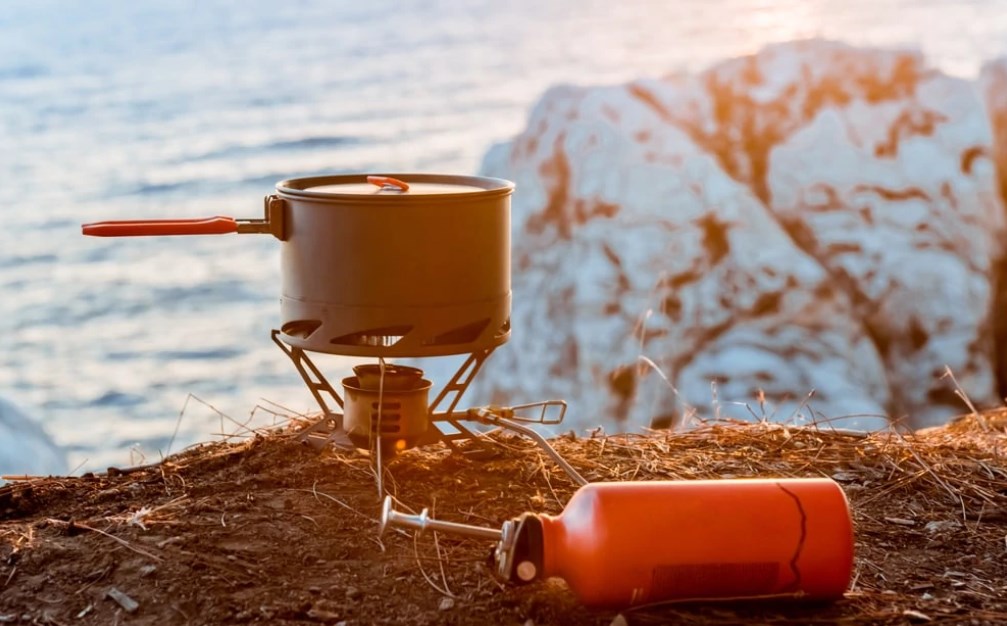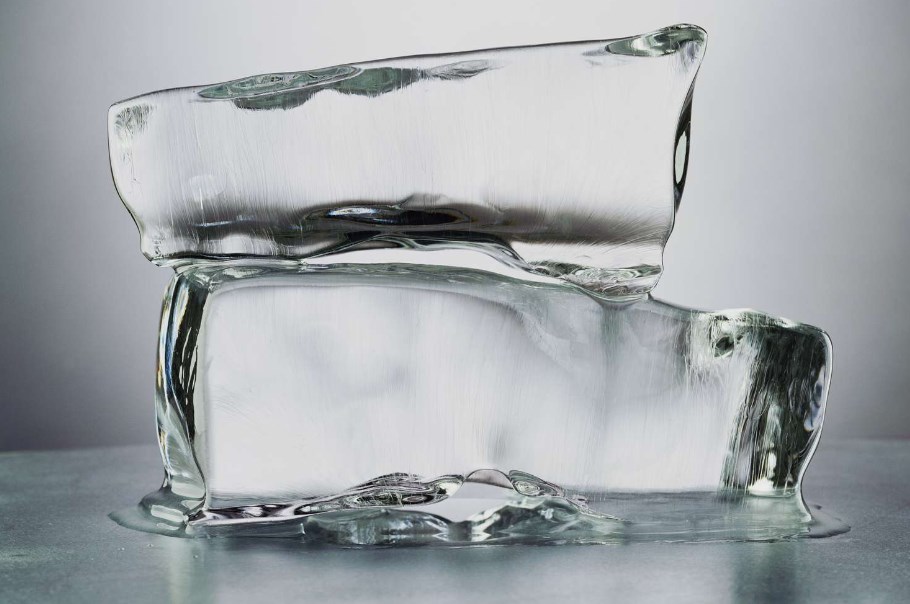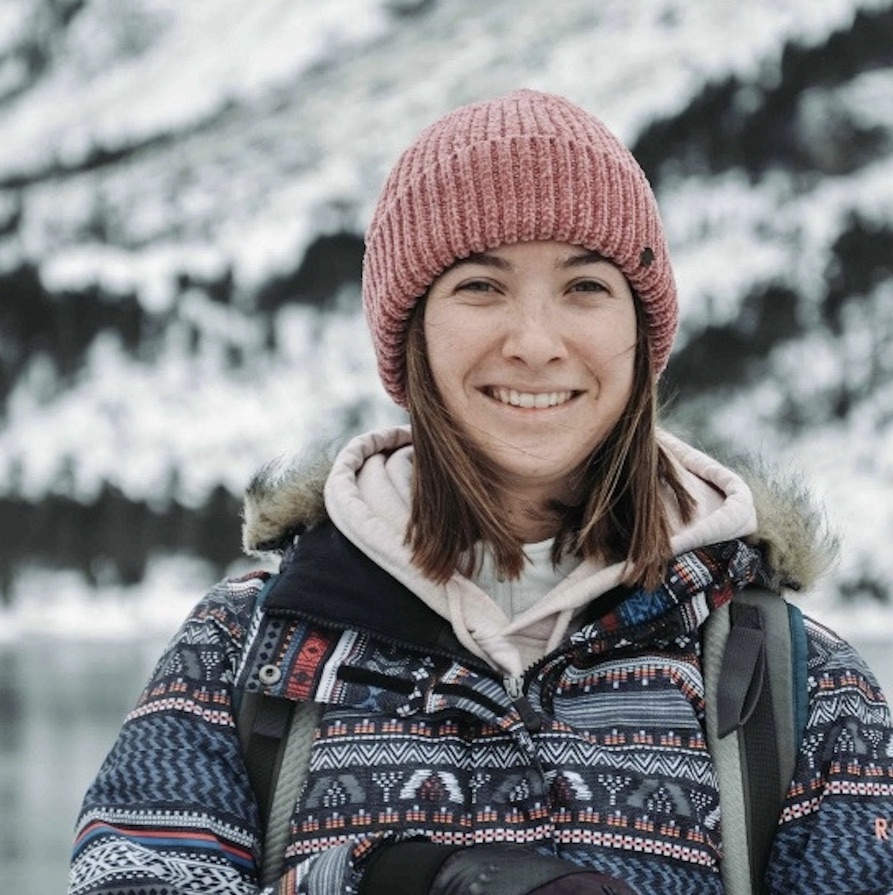When camping people get ready in advance taking their stuff such as a tent, water bottles, boiling facilities, blankets, and so on.
However, if you still wonder how to keep water from freezing during winter camping in near or sub-zero temperatures, this article is for you. How do you keep water from freezing in cold weather camping? I will tell you now.

Equipment for managing water
Three pieces of winter equipment—storage bottles, a burner system, and a cooking pot for melting snow—are advised for water management. These are the things you must have before going out on camping:
- Camp stove system on the liquid fuel, firestarter for it, the fuel itself (about 1 liter), and stove repair kit. It will stop water from freezing.
- Water storage:
- Nalgene bottle (32 fl. oz., weighs 6.2 oz.)
- Small Nalgene bottle (Optional, 16 fl. oz., weighs 6.2 oz.)
- Thermos/metal flask (18 fl. oz., weighs 11.1 oz)
- Cooking pot.
Winter clothing is hefty. My entire pack weighs between 27 and 30 lbs. when it’s quite chilly outside. That includes a four-season tent, a food container that is bear-resistant, avalanche equipment, food, and water.
I carry only the amount of water necessary to get to wherever I plan to camp, which for an all-day trek is one liter, 32 oz., or maybe one and a half liters—which is admittedly frequently a little less than I probably need.
I usually bring two Nalgene bottles and a metal flask with me when I start trekking.
FULL: A little Nalgene container (Optional, 16 fl. oz., weighs 6.2 oz.) Only enough water remains before it freezes to consume.
FULL: Metal flask/Thermos (18 fl. oz., weighs 11.1 oz) I’ll take 16 ounces of it and save 2 ounces for the beginning fluid for melting snow. The Nalgene bottle is empty (32 fl. oz., weighs 6.2 oz.) For a heated water bottle. If the water can be consumed before freezing, it may also be used for drinking water on some journeys.
The larger Nalgene is empty, as you can see. The primary purpose of this bottle is as a hot water bottle while camping.
Though I could theoretically just use the smaller bottle for that, the larger bottle lasts longer at night. The hot water bottle loses temperature halfway through the night, or 4-5 hours, before turning lukewarm under a sleeping bag with a 0° F rating (lowest limit). The majority of the night is typically spent warmly in an expedition bag (-20 °F).
The majority of the hikers I go on treks with carry more water than one liter, and most of the time the weather is not cold enough for their water to freeze solid.
For the water supply to remain stable, stoves are necessary. Carry the water you require; do not attempt to carry all the water you will require for the duration of the trip, as it is both excessively heavy and difficult to prevent from freezing.

Four winter backpacking stove tips
- First tip: stock up on fire starters. The best all-weather fire starter is a flint, which is also all you need to light a stove. Practice at home before using a flint, if you chose to do so. It’s not as simple as it seems. Whatever kind of firestarter you prefer, it is advisable to have several on hand in case one of them fails in cold, snowy conditions.
These include a small lighter, matches, and/or a flint. Lighters are next in terms of the likelihood of failure after matches. Although you can see the fuel level in the clear lighters, they are built of inferior materials and have a higher failure rate than the superior Bic lighters.
- Tip 2: Everyone should bring their own stove.
- Tip 3. Bring enough fuel.
- Tip 4: Always bring a stove repair kit.

Water bottles
It would be nice if you come back into the tent from a winter walk or climbing and get a drink of water from your water bottle. But what if it is frozen?
When camping in the winter, isolating the water from the outside temperature with warm clothing is the most accessible approach to prevent water from freezing. To lower the freezing point, you can add chemicals like salt or alcohol. Water can also be controlled from freezing by using thermos flasks.
When camping and trekking, there are numerous techniques to prevent water from freezing. Your water bottle should be stored in your jacket, backpack, or sleeping bag.
A camp stove or an insulated container are other options for heating it up. That was a brief synopsis; now for the details!
Body heat
Be aware that water bags and bladders are interchangeable throughout this text to prevent confusion.
Regardless of whether you use a bladder or a bottle, you should always keep it inside your tent in a sleeping bag. Due to your body heat production and the closed-off nature of the tent, it gets quite warm during the night.
Simply tuck your bladder or bottle inside your sleeping sack and use it as a pillow. It is quite simple to keep warm in between your knees.
Additionally, be careful to completely shut your container to avoid waking up drenched in water.
Heating water
Before going out of the house, remember to heat your water or simply out of the fridge. Room temperature is the best, to take the water bottle outside.
Use a kettle or a boiler to heat the water. Do not boil it, just make it warm enough. If you did not know if you are boiling water and will take it outside in low temperatures, it will freeze faster.

Sleeping bag
Using warm clothes can help you save warm temperatures for a while. A sleeping bag is a place you can keep the water bottle but if you are moving a lot during the trip, your jacket can help you to keep the water warm.
You will give off tons of body heat when doing activities like hiking and backpacking. Why not put it to use?
A sleeping sack keeps the warmth of your body and can be zipped to keep hot water bottles. The difference between keeping a bottle in the sack or a jacket will be for your convenience only.
Water bottle or a bladder
Well, bottles are useful to keep hot water and insulated bottles are safer to keep liquids in. In case of convenience, water bladders are easier to use as they can take shape of your body in the jacket.
Ideally, if your jacket has pockets inside. You can stick your bottle inside your jacket and not worry about it.
Another small tip is to try to keep your water bottle upside down, it will prevent it from freezing on the top. Especially when you are hiking!
Use your backpack
How do you carry water in winter camping? This question is about where to keep the water and to answer it, we suggest water bottles, water bladders, and insulated water bottles. Anyway, to keep the required temperature you need a place.
The next place to keep your water warm is in the backpack. Just put the plastic bottle closer to the back and your body will heat the water.
Again, choose what is preferable – an insulated bottle or a bladder. Remember that the top of the bottle usually freezes first – so keep it upside down.
Think over what to do with the water access in the bag, as taking it in and out can let all the heat disappear. A hose might connect your bottle and become a provider of it to your mouth! So, how do you carry water while backpacking in the winter?
I equip myself with a quality backpack and using the pack straps I stick the water bottles to travel and move without any discomfort. Hoses help to do manipulations with water even without using hands or taking the bottles in and out. This allows me to keep the water warm.

Use insulated bottles
The most preferable thing among travelers. There is no need to keep them closer to the body. They keep the warmth for longer and are sold in different variations.
Insulated water bottle Yeti is the best one for winter camping.
Boiling some water and putting it in an insulated bottle a few hours before leaving on your excursion is a terrific idea, I learned. It will continue to be warm for a very long time!
You may always make your own insulated bottle if you don’t feel like buying one or don’t have one already. Simply purchase a regular bottle and wrap Reflectix around it to insulate it.
An inexpensive bottle parka is another option.
What if we bury your bottle
Although it is a touch excessive, burying your water bottle does the trick.
Simply create a small, shallow hole at your campground, and place your water bottles inside the hole at night. They won’t freeze as a result of this.
The ground will be warmer as you descend. Just keep in mind that you don’t have to descend too low! You shouldn’t dig a 10-foot hole merely to put your water bottles in.
If the area is covered in snow, you can simply fill the hole with snow. You’d be astonished at how effective snow is as an insulator.
Additionally, keep in mind to store your bottles upside down to avoid the lid freezing!
What to mix with water to stop freezing
Under 39-40 °F, water usually begins to freeze. You must add solvents that lower the freezing point of water to prevent it from freezing. The ideal additives are table salt and alcohol.
Will salt prevent the freezing of water? Yes. When salt is added to water, the freezing point is lowered to 32 °F preventing the water from freezing when left outside in the cold.
Even though adding flavorings like salt or alcohol can change the taste of the water, doing so will prevent it from freezing. Additionally, salts are really beneficial for your body during long excursions in the wilderness.
But here is another helpful tip if you don’t want to add anything to your water.
To lower the freezing point of a bigger container to about 32 °F, add a lot of table salt to it (normal water freezes at 40 °F). You can now submerge your firmly sealed drinking water bottles in this saltwater to prevent them from freezing.
Really cool. Right?

How can I avoid water freezing when auto-camping
Keeping water in as many layers as possible in a car is the greatest approach to keeping it warm. The bottle will remain liquid even if the temperature inside the car drops too low because of the insulation provided by the layers.
Another method is to keep it covered in a Mylar blanket or an extra sleeping sack.
How to keep water from freezing during winter: Extra advice
Before going on a hike or backpacking trip, you should always start the day with hot water and drink as much as you can.
To moisten your lips, you ought to also consume some sweets.
Remember that snow is quite helpful if you are camping in the winter. Snow is always edible, but it might not be clean.
I’ve got one more gimmick up my sleeve: pour a shot of vodka into your water. This will lower the freezing point and make your journey much more enjoyable!
Conclusion
There are a thousand different ways to prevent hot water from freezing, and they all involve a small amount of insulation. Dehydration lowers your energy and affects how you feel outdoors. On the other hand, a well-hydrated body is much more resilient and equipped to survive in the wild.
The only guideline is to protect the water bottles from the cold exactly as you would protect yourself.
Read also: How Long Does A Butane Canister Last (all required info)

My name is Olivia Kellison. I have been camping with friends and on my own for a long time. For me, camping is a great way to escape everyday life’s chaos. I started this blog because I have always had a passion for the great outdoors, and here I am gladly sharing what I know with other outdoor enthusiasts. It does not matter whether you are an experienced adventurer, or just planning your first trip, my blog will be of great help to you.

